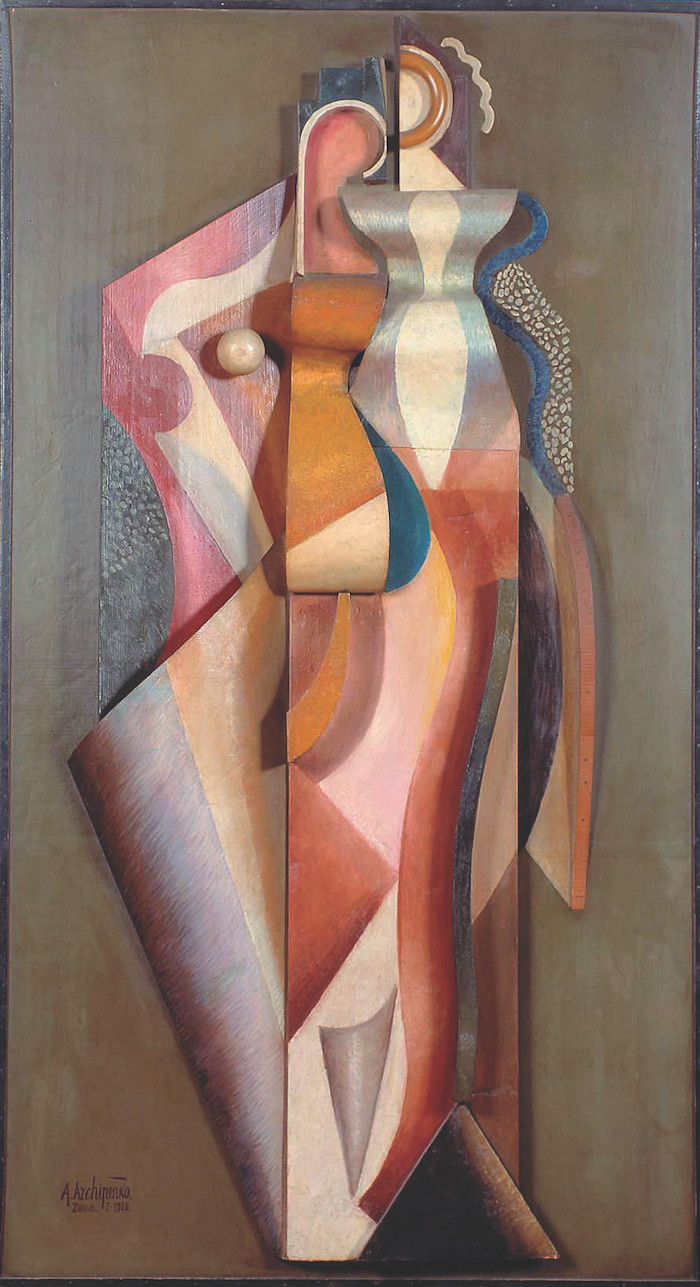“Contemporaries and scholars of Archipenko acknowledge the influence of his ideas on the development of twentieth-century sculpture. Gino Severini, who met him in Paris in 1911, sixty years later would write, “There is no doubt that Archipenko’s creative work had great resonance in Italy.” In 1923, Hans Hildebrand stated, “It is unthinkable that contemporary arts such as painting and sculpture could have entirely separated themselves from naturalism, into whose wide sea all the currents of the 19th century flowed, had the Ukrainian sculptor Archipenko not appeared on the scene.” The American scholar Donald Karshan emphasized, “In less than seven years, he introduced to sculpture changes more radical than it had known for many centuries.” The French art historian Françoise Lucbert wrote, “His novel and deeply original concept of sculpture had repercussions all over the world, be it with the Russian constructivists Pevzner, Gabo, and Tatlin; the British sculptors Barbara Hepworth and Henry Moore; or in North America, where it was widely disseminated in courses and lectures by Archipenko himself,” – wrote V. Susak, an independent scholar and member of the Swiss Academic Society for East European Studies.
During his first years in Paris, Archipenko was in dire straits, a detail worth noting when considering the conditions under which he made his most important discoveries. Archipenko established a close friendship with Fernand Léger when they both had studios in La Ruche. Without a sou in their pockets, they would wander Paris together, from rue Vaugirard to boulevard Belleville. Jacques Chapiro remembers that Léger played a musical instrument and Archipenko sang with his “deep and warm” baritone. From time to time, Léopold Survage accompanied him on the guitar…
Critics and the general public alike spoke of his work with irony and did not accept it…
1919 marked the beginning of Archipenko’s world recognition. That autumn, his solo exhibition opened in Geneva and then moved on to Zurich… At the beginning of 1921, Archipenko sent thirty-three of his works by ship to the exhibition at the Société Anonyme in New York.15 At the same time, his touring exhibition visited many German cities (Berlin, Dresden, Wiesbaden, Hannover, and Munich). Such a rapid rise in Archipenko’s exhibition career raises several questions. Not only art historians, but any sculptor might wonder where the usually indigent artist, recently returned to postwar Paris, got the money to transport his works from one country to another, and even to send them overseas. Why were the first cities to hold his individual exhibitions in Geneva and Zurich? Why Switzerland?
In a chronology of the artist’s life and work, the beginning of 1919 is marked with the following notes: “Sally Falk becomes Archipenko’s most important early collector,” and “[the sculptor] meets Christian Schad and his circle in Geneva.”16 Meeting Sally/George Falk (1888–1962) did indeed change Archipenko’s financial circumstances and plans for the future. The research of Suzanne Schiller17 and Nehama Guralnik,18 published in the mid-1980s, has shown that Sally Falk from Mannheim, the patron of the German sculptor Wilhelm Lehmbruck, and George Falk, the Swiss collector of Archipenko’s works, are actually the same person. Most of the works acquired by Falk in 1919–1921 now belong to the Tel Aviv Museum. This collection includes thirty sculptures, sculpto-paintings, paintings, and drawings and is the most definitive collection of the early period of Archipenko’s oeuvre to date.
